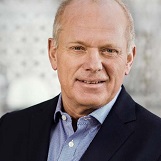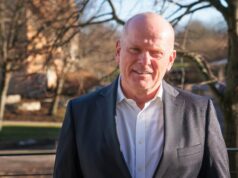
Saniona’s CEO: “financing will bring SAN711 towards proof of concept”
Saniona recently unveiled two new clinical development candidates, expanding its repertoire in ion channel modulation for epilepsy and other neurological disorders. Beyond epilepsy, Saniona manages four clinical programmes, aimed at collaboration opportunities. To propel these assets and potentially forge strategic partnerships, Saniona is carrying out a 140 million SEK rights issue. BioStock talked to Saniona’s CEO Thomas Feldthus to learn more.
Kicking off 2024 on a high note, Saniona selected SAN2465 as a clinical candidate for major depressive disorder, following the selection of SAN2355 from its Kv7 epilepsy programme a week prior. With these additions, Saniona’s epilepsy pipeline now boasts three assets, with the phase II-ready SAN711 taking the forefront.
Besides SAN2465, Saniona also has two clinical programmes beyond epilepsy poised for a partnership. Tesomet is set for phase IIb targeting rare eating disorders, while SAN903 readies for phase I in inflammatory bowel disease. Meanwhile, the furthest advanced asset, tesofensine, is approaching regulatory approval for obesity treatment in Mexico through Saniona’s partner, Medix.
Rights issue for continued development
To advance its assets further and bring the company closer to strategic partnerships, Saniona is now conducting a share issue of units of approximately 140 million SEK. The capital raise, which runs from January 22 to February 5, is covered by subscription undertakings and guarantee commitments of 84 million SEK, corresponding to approximately 60 per cent of the rights issue.
Comments from the CEO
BioStock reached out to CEO Thomas Feldthus to learn more about the upcoming milestones during 2024, and how the proceeds from the rights issue will be used.
Thomas, in your opinion, could SAN711 potentially disrupt the epilepsy treatment landscape and what distinguishes it from competitors?
– Absence epilepsy is manifested by patients losing attention and stopping all activity. Patients can have up to 200 attacks per day, which has significant impact on their school, work, and social life.
– Many broad spectrum antiseizure medications have no effect on this type of epilepsy. Others such as benzodiazepines are effective, but not used because of dire side effects.
– First line therapy comprises two old drugs, ethosuximide and valproate, which were launched in the early 1960’s. Both products have high failure rate to control absence seizures and a negative impact on cognitive functioning, which is highly inappropriate as the patients have problems with this already. About 20 per cent of patients are not treated adequately with existing therapies.
– There is basically no competition. There is only one broad spectrum program in clinical development. Thus, there has been no innovation for the last 60 years despite that there is a significant need for novel antiseizure medications for effective treatment of absence seizures without affecting cognition.
– SAN711 is a novel approach for the effective treatment of absence epilepsy without affecting cognitive function. We have demonstrated that it is effective in genetic animal models of absence seizures and that it has a very benign safety profile in a phase I clinical study.
– We plan to start with patients with childhood absence seizures who are considered resistant to existing therapies. Following that we expect to broaden it to first line therapy and other types of absence epilepsies such as juvenile absence seizures.

With the recent positive data on SAN711 and the initiation of candidate selection in your Kv7 programme, could you provide insights into the commercial interest you have seen so far?
– We see significant interest in both assets. Both compounds are unique as they are highly selective towards the target of interest. We don’t think that any other companies have been able to produce compounds with similar profiles.
– We are speaking with several companies about these assets both for epilepsy and other indications. We are focusing on epilepsy. However, from a partnering perspective we are more flexible.
– The discussed deal structures include world-wide licenses as well as regional licenses where there is a geographical split of commercial rights between the parties. Obviously, the latter is easier if the other party is interested in developing the compounds for epilepsy.
Could you provide a brief overview of your track record in establishing partnerships thus far and what you are looking for in new partnerships?
– We have over the last decade established a long track record of strategic collaborations and spinouts.
– We’ve formed alliances with top-tier companies like Boehringer Ingelheim, Pfizer, and Janssen, as well as engaged with midsize and innovative firms such as Medix, AstronauTx, and Proximagen. We have made three spinouts including Initiator Pharma and Scandion Oncology, both listed on First North Stockholm, while Cadent Therapeutics was acquired by Novartis. These activities have generated over 400 MSEK in income, and we retain the potential for future milestones, royalties, and earnouts from several of these collaborations.
You are now raising funds through the rights issue. How important is this financial infusion in furthering strategic partnerships?
– Saniona has a stronger pipeline than ever before. This financing will enable us to create value by progressing selected pipeline programmes with the aim of supporting our business development activities and bringing one programme to proof of concept.
– We will use the proceeds to bring SAN711 forward to proof of concept in absence seizures and take one or several of the new candidates forward in preclinical development including SAN2355. In addition, we are also considering taking SAN2219 and SAN2465 into the first part of the pre-clinical development.
– We will carefully evaluate our options when we have closed this financing and then adjust the allocation when we have made our next collaboration agreement.
What specific goals or objectives will be addressed by the funds?
– This financing will be used to bring SAN711 towards proof of concept in absence seizures and mature several programmes for partnerships thereby securing funding without being depending on the financial markets
Considering the potential exercise of warrants of series TO 4 in April 2025, how do you plan to utilise these additional proceeds?
– The shareholders will obtain a rebate of 30 per cent on the price of Saniona’s stock at the time of exercise of the warrant in April 2025. An approval of tesofensine in Mexico or a new collaboration may have a significant impact on value of the TO 4 for investors as well as on the proceeds to Saniona. We have still some debts to Formue Nord, and up to 50 per cent of the proceeds from TO 4 will be used to resolve that if it has not been paid back before April 2025. The balance will be used to progress our pipeline.
Finally, what key milestones do you hope to achieve during 2024?
– Income through new collaborations and approval/launch of tesofensine in Mexico which may facilitate progress and on other pipeline programmes including SAN711, SAN2255, and SAN2219 for epilepsy, SAN903 for inflammatory bowel disease, SAN2465 for major depressive disorder, tesofensine in other territories, and Tesomet for rare eating disorders either through the new partnerships or internally without being dependent on the financial markets.
The content of BioStock’s news and analyses is independent but the work of BioStock is to a certain degree financed by life science companies. The above article concerns a company from which BioStock has received financing.
